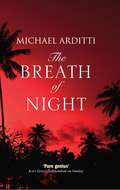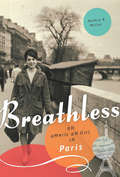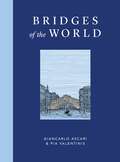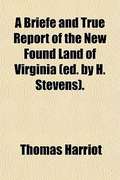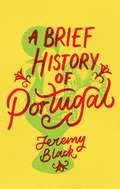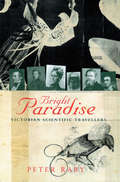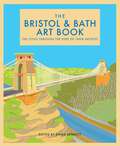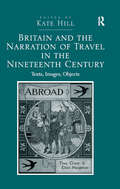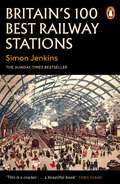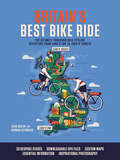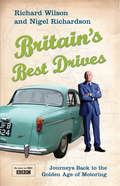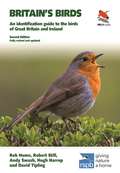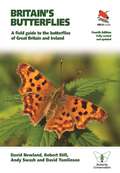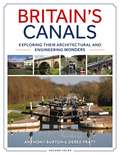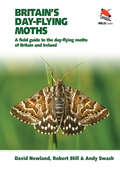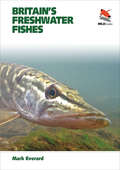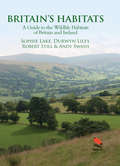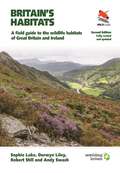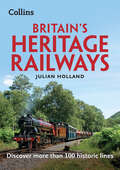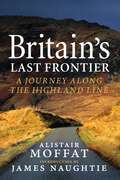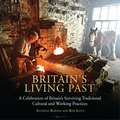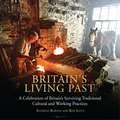- Table View
- List View
The Breath of Night
by Michael ArdittiPhilip Seward travels to the Philippines to investigate the case of a missionary priest imprisoned for murder, where he is drawn into a labyrinth of vice, violence, and corruption where nothing and nobody are what they seem.'Part Conrad, part Waugh, part Greene, and pure genius' Independent on Sunday'This is Arditti's most dazzling novel to date because of the scale of his ambition and his triumph in pulling it off' Peter Stanford, Daily TelegraphWhile working as a missionary priest in the Philippines during the Marcos dictatorship, Julian Tremayne championed the Communist rebels and found himself imprisoned for murder. Now, three decades later, following Julian's death, a cult develops around him, even calling for sainthood. When Philip Seward goes to investigate on behalf of Julian's family, he is drawn into a labyrinth of vice, violence, and corruption where nothing and nobody are what they seem. Enriched by a gallery of engaging characters ranging from priests to prostitutes, GIs to gangsters, and street children to Imelda Marcos, this outstanding novel is at once a gripping psychological thriller, a challenging moral mystery, and an unforgettable voyage into a dark and exotic landscape.
Breathless: An American Girl in Paris
by Nancy K. MillerIn the early 1960s, most middle-class American women in their twenties had their lives laid out for them: marriage, children, and life in the suburbs. Most, but not all.Breathless is the story of a girl who represents those who rebelled against conventional expectations. Paris was a magnet for those eager to resist domesticity, and like many young women of the decade, Nancy K. Miller was enamored of everything French-from perfume and Hermès scarves to the writing of Simone de Beauvoir and the New Wave films of Jeanne Moreau. After graduating from Barnard College in 1961, Miller set out for a year in Paris, with a plan to take classes at the Sorbonne and live out a great romantic life inspired by the movies.After a string of sexual misadventures, she gave up her short-lived freedom and married an American expatriate who promised her a lifetime of three-star meals and five-star hotels. But her husband wasn't who he said he was, and she eventually had to leave Paris and her dreams behind.This stunning memoir chronicles a young woman’s coming-of-age tale, and offers a glimpse into the intimate lives of girls before feminism.
Bridges of the World
by Giancarlo Ascari Pia ValentinisFifty bridges from all over the world to be crossed on foot or with one's imagination. Throughout history bridges have been used as a way to link people, places and cultures. Whether a natural arch or a man-made feat of engineering, bridges can be both beautiful and functional, each in a unique relationship with the land around it. And the stories that accompany these bridges are just as fascinating: the legends, anecdotes and the inspirational lives of those who designed, built and crossed them.This book celebrates some of the world's best bridges of all description: great icons such as the Tower Bridge in London, the Charles Bridge in Prague and the Golden Gate in San Francisco; a precarious thread stretched between the Twin Towers by an acrobat; treasures destroyed and rebuilt, like the Mostar Bridge in Herzegovina; and a streak of frozen snow between the crevasses of a glacier.
A Brief and True Report of the New Found Land of Virginia
by Thomas HarriotFor more than 400 years, scholars from an array of disciplines have recognized Theodor de Bry's 1590 edition of Thomas Hariot's A briefe and true report of the new found land of Virginia as a book whose influence shaped contemporary European perceptions of North America, as well as subsequent research on that period for centuries to come. <P> <P> The book, upon which the present volume is based, is from the collections of the Library at the Mariners' Museum. It is extremely rare, containing hand-colored illustrations from the period, and is one of only three recorded copies with colored plates. This complete facsimile edition presents de Bry's exceptional engravings, based on John White's sixteenth-century watercolors, in their original hand-colored form. The book is available in paperback and as a limited cloth edition of two hundred numbered copies. Both editions are printed by the award-winning Stinehour Press. <P> <P> As the first volume in de Bry's celebrated Grand Voyages, a series of publications chronicling many of the earliest expeditions to the Americas, this book, which incorporates a 1588 text by Thomas Hariot, was illustrated and published in four languages. It became for many Europeans their first glimpse of the American continent. Accompanying the Latin facsimile is an English text. The first section is modernized from earlier versions of the English, and the second part, which accompanies the plates, is newly translated from the original Latin. <P> <P> In addition to a valuable introduction, the book includes two illuminating essays. The first, by Karen Ordahl Kupperman, examines the early American settlement and tells how a collaboration between the writer and mathematician Thomas Hariot and the artist John White (later governor of the Roanoke Colony) evolved into a rich study not only of English colonial life but of the Indian culture and the natural resources of the region. The second essay, by Peter Stallybrass, uncovers new information in the much studied plates and presents an intriguing theory about the creation and importance of the engravings. <P> <P> This facsimile edition will appeal to students and scholars in several fields of study, from American history and ethnography to fine arts and the history of the book, and will provide the reader with the best illustration of the New World as it was first presented to the Old.
A Brief History of Portugal: Indispensable for Travellers
by Jeremy BlackThis is a comprehensive history of Portugal that covers the whole span, from the Stone Age to today. An introduction provides an understanding of geographical and climatic issues, before an examination of Portugal's prehistory and classical Portugal, from the Stone Age to the end of the the Roman era.Portugal's history from ad420 to the thirteenth century takes in the Suevi, Visigoths and Moors. Then, a look at medieval Portugal, covers the development of Christian Portugal culminating with the expulsion of the Moors, with a focus on key sites. A subsequent section on Spanish rule, between 1580 and 1640, explains why Spain took over and why Spanish rule collapsed.There is a significant focus on Portugal's global role, particularly during the age of exploration, or expansion, in the fifteenth century to 1580: Manueline Portugal, Henry the Navigator, Vasco da Gama and Belém. Portugal was the first of the Atlantic empires, with territory in the Azores, Madeira, West Africa and Brazil, and it remained a major empire until the 1820s, retaining an African empire until the 1970s. It's empire in Asia - in Malacca, Macao, Goa and Timor - continued even longer, until the 1990s. Black shows how Portugal had a global impact, but the world, too, had an impact on Portugal. Baroque Portugal, between 1640 and 1800, is explored through palaces in Mafra, Pombal and elsewhere and the wealth of Brazil. The nineteenth century brought turmoil in the form of a French invasion, the Peninsular War, Brazilian independence, successive revolutions, economic issues and the end of the monarchy.Republican Portugal brought further chaos in the early years of the twentieth century, then the dictatorship of Salazar and its end in the Carnation Revolution of 1974. Portugal's role in both world wars is examined, also its wars in Africa. From the overthrow of autocracy to a new constitution and the leadership of Soares, contemporary, democratic Portugal is explored, including the fiscal crisis of recent years. Throughout Black introduces the history and character of the country's principal regions, including the Azores, Madeira and the Cape Verde Islands. He looks at key national sites, at Portuguese food and wine and the arts, with special sections devoted to port, Portugal's famous tiles and the university established at Coimbra in 1290.
Bright Paradise: Victorian Scientific Travellers
by Peter Raby'A fabulously rich, anecdotal and gripping account of those men and women who ventured out from Britain into the swamps and jungles of the tropics in search, knowingly or not, of the missing link. Through their stoical-sometimes crack-brained-voyages, the shape of the world, geographically and biologically, was elucidated. Never have more significant journeys been made. . . . Enthusiastic, informed and racy, this is one of the most invigorating accounts of the exploits of people from an age whose intrepidity is staggering. ' 'Peter Raby's book follows a disparate crew of botanists, scientists and collectors, who tried to order the earthly paradise which unfolded around them. Entrepreneurs they may have been - many were dependent on selling their specimens to finance their trips-but they were also scrupulous and sensitive observers. . . . Raby finds some shimmering, personalities. . . . His book is excellent. ' DAILY TELEGRAPH
The Bristol and Bath Art Book: The cities through the eyes of their artists (The city through the eyes of its artists)
by Emma BennettBristol and Bath are two beautiful, closely connected cities. They are portrayed through the eyes of their artists in a delightful variety of styles in this stunning book.The Bristol and Bath Art Book portrays two very different cities. The beautiful images in the book capture the breath-taking landscape of rivers, hills and gorges which they share, but also the cities' sights that are so unique. Bristol is painted as busy, quirky and vibrant, where Bath glows in more tranquil hues. These important cities in the history of the world are intimately connected.The river Avon that flows through both cities, gouges the spectacular Avon Gorge at Bristol, which is where its international maritime connections begin.The regenerated old docks (the 'floating harbour'), Wapping Wharf and the quayside are lovingly depicted by various artists. Now that the main docks are outside the city, the harbour-side now bustles with shops, bars and offices, but there are still cranes to be seen at the M shed. Underfall boatyard remains a home to maritime businesses and is also pictured in this lovely book, along with pleasure craft and houseboats in the harbour.John Cabot's The Matthew is the ship that put America on the map. The reconstruction is depicted in drawings and paintings. She may have been a pirate ship at one time, too, as Bristol was the birthplace of Blackbeard and had a thriving piracy business.From this Atlantic connection, the list of items traded expanded from wool, wine and grain to tobacco and alas, to slaves. The profits from this trade endowed many of the fine public monuments drawn and painted here. Like many places, Bristol is undertaking a new reckoning with its history.The great engineer Isambard Kingdom Brunel designed the Clifton Suspension Bridge to span the deep Avon Gorge. In the book, there are many images of this vertiginous bridge: ringed by balloons, luminous in the gloaming, stark in the snow, or painted to resemble a cathedral arch from below. It is a much-loved, living monument to the great man.His Great Western Railway terminus at Temple Meads features here in drawings and prints, along with his pioneering Bristol-built steamship, the SS Great Britain.Crossing Brunel's famous bridge over the Avon, you will find yourself in the tranquil Leigh woods, painted as a hotspot for bluebells in spring.The old Railway Path, flat, traffic-free and lined with greenery, takes you from Bristol to Bath, where you will find more gorgeous parks: the Georgian garden in the town centre, Alexandra Park with panoramas of the city and the Botanical Gardens with its aerial walkway.Bath is a UNESCO world heritage site because of its Roman remains and exquisite Georgian architecture. Its famous Roman Baths were built around a hot spring the Romans believed sacred to the Goddess Sulis and the city became a centre for health and an inspiration for artists.Its 18th-century architecture: The Royal Crescent, The Circus, Pulteney Bridge and Assembly Rooms, are all examples of Bath's heyday as a Georgian spa town and are featured in the art book in stunning paintings, drawings and collages.They capture the Bath that Jane Austen would have known from her time in the city. Here, movies of some of her novels have been filmed, along with many other Regency era series e.g. the record-breaking series Bridgerton.
Britain and the Narration of Travel in the Nineteenth Century: Texts, Images, Objects
by Kate HillInterrogating the multiple ways in which travel was narrated and mediated, by and in response to, nineteenth-century British travelers, this interdisciplinary collection examines to what extent these accounts drew on and developed existing tropes of travel. The three sections take up personal and intimate narratives that were not necessarily designed for public consumption, tales intended for a popular audience, and accounts that were more clearly linked with discourses and institutions of power, such as imperial processes of conquest and governance. Some narratives focus on the things the travelers carried, such as souvenirs from the battlefields of Britain’s imperial wars, while others show the complexity of Victorian dreams of the exotic. Still others offer a disapproving glimpse of Victorian mores through the eyes of indigenous peoples in contrast to the imperialist vision of British explorers. Swiss hotel registers, guest books, and guidebooks offer insights into the history of tourism, while new photographic technologies, the development of the telegraph system, and train travel transformed the visual, audial, and even the conjugal experience of travel. The contributors attend to issues of gender and ethnicity in essays on women travelers, South African travel narratives, and accounts of China during the Opium Wars, and analyze the influence of fictional travel narratives. Taken together, these essays show how these multiple narratives circulated, cross-fertilised, and reacted to one another to produce new narratives, new objects, and new modes of travel.
Britain and the Narration of Travel in the Nineteenth Century: Texts, Images, Objects
by Kate HillInterrogating the multiple ways in which travel was narrated and mediated, by and in response to, nineteenth-century British travelers, this interdisciplinary collection examines to what extent these accounts drew on and developed existing tropes of travel. The three sections take up personal and intimate narratives that were not necessarily designed for public consumption, tales intended for a popular audience, and accounts that were more clearly linked with discourses and institutions of power, such as imperial processes of conquest and governance. Some narratives focus on the things the travelers carried, such as souvenirs from the battlefields of Britain’s imperial wars, while others show the complexity of Victorian dreams of the exotic. Still others offer a disapproving glimpse of Victorian mores through the eyes of indigenous peoples in contrast to the imperialist vision of British explorers. Swiss hotel registers, guest books, and guidebooks offer insights into the history of tourism, while new photographic technologies, the development of the telegraph system, and train travel transformed the visual, audial, and even the conjugal experience of travel. The contributors attend to issues of gender and ethnicity in essays on women travelers, South African travel narratives, and accounts of China during the Opium Wars, and analyze the influence of fictional travel narratives. Taken together, these essays show how these multiple narratives circulated, cross-fertilised, and reacted to one another to produce new narratives, new objects, and new modes of travel.
Britain's 100 Best Railway Stations
by Simon JenkinsThe perfect new gift from the bestselling author of Britain's 1000 Best ChurchesIt is the scene for our hopeful beginnings and our intended ends, and the timeless experiences of coming and going, meeting, greeting and parting. It is an institution with its own rituals and priests, and a long-neglected aspect of Britain's architecture. And yet so little do we look at the railway station. Simon Jenkins has travelled the length and breadth of Great Britain, from Waterloo to Wemyss Bay, Betws-y-Coed to Beverley, to select his hundred best. Blending his usual insight and authority with his personal reflections and experiences - including his founding the Railway Heritage Trust - the foremost expert on our national heritage deftly reveals the history, geography, design and significance of each of these glories.Beautifully illustrated with colour photographs throughout, this joyous exploration of our social history shows the station's role in the national imagination; champions the engineers, architects and rival companies that made them possible; and tells the story behind the triumphs and follies of these very British creations. These are the marvellous, often undersung places that link our nation, celebrated like never before.
Britain's Best Bike Ride: The ultimate thousand-mile cycling adventure from Land’s End to John o’ Groats
by Hannah Reynolds John WalshBritain’s Best Bike Ride by John Walsh and Hannah Reynolds is a beautifully illustrated and inspirational guide to the ultimate thousand-mile cycling adventure from Land’s End to John o’ Groats.There are many ways to cycle between Land’s End and John o’ Groats, but the route specially created for this book, LEJOG1000, is designed to show you the quiet roads, picturesque villages and dramatic landscapes that make the experience memorable. Instead of taking the most direct route, it invites you to explore the best of each region you pass through. You’ll discover stunning beaches and wild ponies on your way along the quiet wild-flower-edged lanes of Cornwall and Devon, follow the meandering River Wye in Wales, wind your way through a post-industrial landscape of canals and mill chimneys in the North West, before moving on to the epic climbs and grand vistas of Scotland.Carefully crafted to allow you the freedom to create your own ultimate adventure, the route is split into 30 adaptable stages, each finishing in a town or village with suggested places to eat, drink and stay. Create your own bespoke itinerary, or use one of three itinerary options provided: the 2-week classic, 3-week explorer or 10-day challenge. Along with stunning photography and lively insightful writing you will find all the practical information you need to plan your LEJOG1000 – route directions, bespoke mapping, cafes, pubs and local bike shops. Downloadable GPX files of the route are also available.Britain’s Best Bike Ride will inspire you to take on this once-in-a-lifetime challenge – you’ll be pedalling into John o’ Groats having experienced the very best of Britain on a bike before you know it!
Britain's Best Drives: Journeys Back To The Golden Age Of Motoring
by Nigel Richardson Richard WilsonBack in the fifties, motoring was a liberating experience. Before motorways, traffic jams and road rage, the leisurely Sunday drive could be the highlight of the week. Now, armed with period driving guides, Richard Wilson has packed his picnic, flask and himself into some very stylish vintage cars to retrace six classic routes through the UK and recreate the pleasure of the golden age of motoring for BBC TV.Including the dramatic winding roads of the North Cornwall coast, the lochs and peaks of the Central Highlands and the bronze-age monoliths of the North Yorkshire moors, Richard explores some of the most striking and beautiful scenery and landmarks Britain has to offer. Along the way he meets the people who live there and remember how these places once were, and wonders why things aren't what they used to be.
Britain's Birds: An Identification Guide to the Birds of Great Britain and Ireland Second Edition, fully revised and updated (WILDGuides #41)
by Rob Hume Robert Still Andy Swash Hugh Harrop David TiplingA new, improved and thoroughly updated edition of the bestselling photographic guide—the only one to cover every bird, in every plumage, ever recorded in Britain and IrelandA bestselling guide since it was first published, Britain's Birds has quickly established itself as the go-to photographic identification guide to the birds of Great Britain and Ireland—the most comprehensive, up-to-date, practical and user-friendly book of its kind. Acclaimed by birdwatchers of all kinds, from the beginner to the most experienced, the guide has now been thoroughly revised and updated to make it even better than before. Combining the finest of identification guide content and presentation, this eagerly awaited second edition preserves the best of the first edition while covering twelve newly recorded species and offering a host of improvements that make identification easier.Provides comprehensive coverage of all the birds ever recorded in Britain and IrelandDescribes and illustrates all plumages likely to be encounteredFeatures more than 3,200 stunning photographs carefully selected to show the birds as you really see themOutlines simple steps to help you identify any bird you seePresents simple and accurate comparisons of similar and difficult speciesNew features include:Coverage of 12 new species recorded since the first edition plus revisions to reflect the latest taxonomyCoverage of all subspeciesImproved identification aids, including more than 400 new photos, enhanced photo annotations and many redesigned platesFully revised species accounts, including the latest information on identification features, status, numbers, geographical range and date ranges for all plumages that may be seen during only part of the year
Britain's Butterflies: A Field Guide to the Butterflies of Great Britain and Ireland – Fully Revised and Updated Fourth Edition (WILDGuides #75)
by David Newland Robert Still Andy Swash David TomlinsonA new and improved edition of the popular photographic field guideBritain’s Butterflies is a comprehensive and beautifully designed photographic field guide to the butterflies of Britain and Ireland. Containing hundreds of stunning colour photographs, this extensively revised and updated new edition provides the latest information on every species ever recorded. It covers in detail the identification of all 59 butterfly species that breed regularly, as well as four former breeders, 10 rare migrants and one species of unknown status. The easy-to-use format will enable butterfly watchers—beginners or experts—to identify any species they encounter. Produced in association with Butterfly Conservation, this edition features new introductory sections to the main "types" of butterflies; updated distribution maps; a revised species order reflecting the latest taxonomy; revised sections on recording and monitoring, and conservation and legislation; and a new section on climate change.Stunning colour plates show typical views of each butterfly species, including the various forms and common aberrationsDetailed species profiles provide information on status and distribution, including up-to-date maps, and cover adult identification; behaviour; breeding habitat requirements; population and conservation; egg, caterpillar and chrysalis; and caterpillar foodplantsPhotographs of the egg, caterpillar and chrysalis for every breeding speciesSections on biology, where to look for and how to identify butterflies, and other essential information
Britain's Canals: Exploring their Architectural and Engineering Wonders
by Anthony Burton Derek PrattBritain's Canals is a charming and insightful exploration into the amazing architecture and engineering wonders that surround Britain's inland waterways – from the awe-inspiring 30-lock flight on the Worcester and Birmingham Canal, to the delightful chocolate-box lock-keepers' cottages that line the cut of every canal, to masterpieces such as the 18-arch Pontcysyllte aqueduct, the highest aqueduct in the world, to beautiful bridges, grand company buildings, the social hubs that were, and still are, canal-side pubs, plus so much more. In contrast to many inland waterways books which are organised geographically by canal, Britain's Canals is structured thematically, with chapters covering the line (the shape of the canal), locks and lock cottages, bridges, aqueducts, lifts and planes, company buildings, wharves, basins and quays and finally the canal-side pub. Each chapter explores how these features were created and have changed through history, right through to the present, with plenty of ideas for places to visit – plus full information on how to get to them. An abundance of full-colour photography throughout, both historical and modern-day, will delight readers and inspire them to explore Britain's wondrous inland waterways, whether on boat, by foot or by bike. In Britain's Canals, two inland waterways experts and admired authors come together to produce the definitive word on the man-made wonders that make Britain's canals so special, so loved and enjoyed by so many.
Britain's Canals: Exploring their Architectural and Engineering Wonders
by Anthony Burton Derek PrattBritain's Canals is a charming and insightful exploration into the amazing architecture and engineering wonders that surround Britain's inland waterways – from the awe-inspiring 30-lock flight on the Worcester and Birmingham Canal, to the delightful chocolate-box lock-keepers' cottages that line the cut of every canal, to masterpieces such as the 18-arch Pontcysyllte aqueduct, the highest aqueduct in the world, to beautiful bridges, grand company buildings, the social hubs that were, and still are, canal-side pubs, plus so much more. In contrast to many inland waterways books which are organised geographically by canal, Britain's Canals is structured thematically, with chapters covering the line (the shape of the canal), locks and lock cottages, bridges, aqueducts, lifts and planes, company buildings, wharves, basins and quays and finally the canal-side pub. Each chapter explores how these features were created and have changed through history, right through to the present, with plenty of ideas for places to visit – plus full information on how to get to them. An abundance of full-colour photography throughout, both historical and modern-day, will delight readers and inspire them to explore Britain's wondrous inland waterways, whether on boat, by foot or by bike. In Britain's Canals, two inland waterways experts and admired authors come together to produce the definitive word on the man-made wonders that make Britain's canals so special, so loved and enjoyed by so many.
Britain’s Day-flying Moths: A Field Guide to the Day-flying Moths of Britain and Ireland
by David Newland Robert Still Andy Swash Mark ParsonsThis concise photographic field guide will help you identify any of the 100 or so day-flying moths found in Britain and Ireland. Combining stunning photographs, authoritative text, and an easy-to-use design, this book makes a perfect traveling companion--one that will increase your enjoyment of these colorful and intriguing creatures. Like butterflies, some moths fly regularly in sunshine, whereas others that usually fly only at night are readily disturbed from their resting places during the day. This guide describes all of these species, with at least one photograph of each in its natural, resting pose. The text includes a brief description of each moth, with details of its life history, where and when to look for it, its status, the food plants of its caterpillars, and its special features. Introductory sections cover many topics, including how to distinguish moths from butterflies; classification; life cycle and behavior; ecological importance; the impact of habitat and climate change; recording and monitoring; and conservation. Individual accounts for some 100 species Stunning photographs of every moth, as you see them Attractive, easy-to-use, and accessible design
Britain’s Day-flying Moths: A Field Guide to the Day-flying Moths of Britain and Ireland (PDF)
by David Newland Robert Still Andy Swash Mark ParsonsThis concise photographic field guide will help you identify any of the 100 or so day-flying moths found in Britain and Ireland. Combining stunning photographs, authoritative text, and an easy-to-use design, this book makes a perfect traveling companion--one that will increase your enjoyment of these colorful and intriguing creatures. Like butterflies, some moths fly regularly in sunshine, whereas others that usually fly only at night are readily disturbed from their resting places during the day. This guide describes all of these species, with at least one photograph of each in its natural, resting pose. The text includes a brief description of each moth, with details of its life history, where and when to look for it, its status, the food plants of its caterpillars, and its special features. Introductory sections cover many topics, including how to distinguish moths from butterflies; classification; life cycle and behavior; ecological importance; the impact of habitat and climate change; recording and monitoring; and conservation. Individual accounts for some 100 species Stunning photographs of every moth, as you see them Attractive, easy-to-use, and accessible design
Britain’s Freshwater Fishes (PDF)
by Mark EverardBritain hosts a diversity of freshwater environments, from torrential hill streams and lowland rivers to lakes and reservoirs, ponds and canals, and ditches and estuaries. Britain's Freshwater Fishes covers more than 50 species of freshwater and brackish fish found in these waters. This beautifully illustrated guide features in-the-hand and in-the-water photographs throughout, and accessible and informative overviews of topics such as fish biology and life cycles. Detailed species accounts describe key identification features, with information on status, size and weight, habitat, ecology, and conservation. The book also includes a glossary and suggestions for further reading. This easy-to-use field guide will be invaluable to anyone interested in Britain's freshwater fish life, from naturalists and academics to students and anglers. Covers all of Britain's freshwater fishes Features beautiful photos throughout Includes detailed information on more than 50 species, the places they inhabit, and their roles in Britain's ecosystems Attractively designed and easy to use
Britain’s Habitats: A Guide to the Wildlife Habitats of Britain and Ireland (PDF)
by Sophie Lake Durwyn Liley Robert Still Andy SwashA photographic guide to habitats, this lavishly illustrated book provides a comprehensive overview of the natural history and conservation landscape of Britain and Ireland. In essence a field guide, the book leads the reader through all the main habitat types, with information on their characteristics, extent, geographical variation, key species, cultural importance, origins and conservation. It aims to help visitors to the countryside recognize the habitats around them, understand how they have evolved and what makes them special, and imagine how they might change in the future.This book is the perfect companion for anyone travelling in Britain and Ireland, and essential reading for all wildlife enthusiasts, professional ecologists and landscape architects.Individual sections on all the main habitat types found in Britain and IrelandMore than 680 evocative colour photographs, including images from around Britain and Ireland in all seasonsDetails and photographs of key species and features associated with the different habitatsUp-to-date information—including maps—on the distribution, extent and importance of all habitat typesInformation on key nature conservation designations and different systems of habitat classification
Britain's Habitats: A Field Guide to the Wildlife Habitats of Great Britain and Ireland - Fully Revised and Updated Second Edition (WILDGuides #76)
by Sophie Lake Durwyn Liley Robert Still Andy SwashA comprehensive and lavishly illustrated photographic guide—now in a handy field-guide formatThis lavishly illustrated photographic guide provides a comprehensive overview of the natural history of wildlife habitats in Britain and Ireland. Now completely redesigned in a handy field-guide format, and featuring revised and updated text throughout, this new edition of Britain’s Habitats guides readers through all the main habitat types, presenting information on their characteristics, extent, geographical variation, key species, cultural importance, origins and conservation. It aims to help visitors to the countryside recognize the habitats around them, understand how they have evolved and what makes them special, and imagine how they might change in the future. This new edition includes updated maps and additional photographs throughout, and covers a new habitat—gardens. The perfect companion for anyone travelling in Britain and Ireland, the book is essential reading for all wildlife enthusiasts, professional ecologists and landscape architects.Individual sections on all the main habitat types found in Britain and IrelandMore than 680 evocative colour photographs, including images from around Britain and Ireland in all seasonsDetails and photographs of key species and features associated with the different habitatsUp-to-date information—including maps—on the distribution, extent and importance of all habitat typesFeatures new to this edition include a field-guide format, updated maps, more photographs throughout and coverage of an additional habitat—gardens
Britain’s Heritage Railways: Discover More Than 100 Historic Lines
by Julian HollandThe essential guide to exploring Britain’s last remaining historic lines, Britain’s Heritage Railways is ideal for anyone planning or looking for a nostalgic railway trip. From bestselling railway author Julian Holland.
Britain's Last Frontier: A Journey Along the Highland Line
by Alistair MoffatThe Highland Line is Britain's last meaningful frontier. First recognised by Agricola in the first century AD (parts of its most northerly section mark the furthest north the Romans advanced), it divides the country both geologically and culturally, signalling the border between Highland and Lowland, Celtic and English-speaking, crofting and farming. In Britain's Last Frontier, best-selling author Alistair Moffat makes a journey of the imagination as well as through geography, tracing the route of the Line from the battlefield at Culloden, along the Moray coast with occasional forays into the mountains. He then swings south-west at Stonehaven before arriving at Glasgow and the Clyde. In doing so he discovers how the Line has influenced life and attitudes for thousands of years. Packed with history, myth, anecdote and sharp observation, this is a fascinating and absorbing book that offers a new perspective on our national history.
Britain's Living Past: A Celebration of Britain's Surviving Traditional Cultural and Working Practices
by Anthony Burton Rob ScottBritain's Living Past is a celebration of the best of the past, of things that have been preserved because they still matter to the community. It is a book in which the emphasis is very much on the word 'living'; looking at traditions, pastimes and working practices, some centuries old, that survive today not as museum pieces or in pages of a history book but as part of everyday modern life. From reminders of Britain's great maritime past in the crafts of the shipwright and the rope maker, to the organised mayhem that is the Ashbourne Tuesday football match and the exotic splendour of Giffords traditional circus, writer Tony Burton and photographer Rob Scott have travelled the length and breadth of our great nation to recreate for the reader the amazing sights they have seen. Together they have travelled from Shetland in the far north to the tip of Cornwall. They have sailed along the Scottish coast in a paddle steamer and learned how to make Melton Mowbray pork pies by hand. They have watched ponies galloping through the streets of Appleby and resisted the temptation to try too many of the sweets in the world's oldest sweet shop. This is a book that delights in the rich diversity of our historic survivors. For both author and photographer it has been a pleasure to witness many skilled people at work: to discover the complexity of building a fairground organ or to marvel at the skill and athleticism of circus performers. This is a book of rich variety that celebrates the great survivors from our islands' history.
Britain's Living Past: A Celebration of Britain's Surviving Traditional Cultural and Working Practices
by Rob Scott Anthony BurtonBritain's Living Past is a celebration of the best of the past, of things that have been preserved because they still matter to the community. It is a book in which the emphasis is very much on the word 'living'; looking at traditions, pastimes and working practices, some centuries old, that survive today not as museum pieces or in pages of a history book but as part of everyday modern life. From reminders of Britain's great maritime past in the crafts of the shipwright and the rope maker, to the organised mayhem that is the Ashbourne Tuesday football match and the exotic splendour of Giffords traditional circus, writer Tony Burton and photographer Rob Scott have travelled the length and breadth of our great nation to recreate for the reader the amazing sights they have seen. Together they have travelled from Shetland in the far north to the tip of Cornwall. They have sailed along the Scottish coast in a paddle steamer and learned how to make Melton Mowbray pork pies by hand. They have watched ponies galloping through the streets of Appleby and resisted the temptation to try too many of the sweets in the world's oldest sweet shop. This is a book that delights in the rich diversity of our historic survivors. For both author and photographer it has been a pleasure to witness many skilled people at work: to discover the complexity of building a fairground organ or to marvel at the skill and athleticism of circus performers. This is a book of rich variety that celebrates the great survivors from our islands' history.
